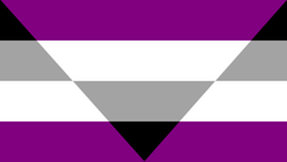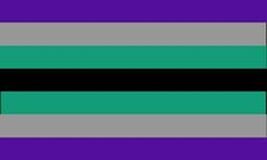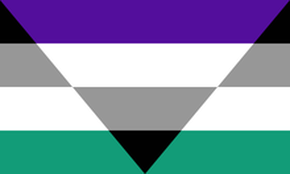|
2/1/2021 2 Comments History of AegosexualityEdha Shirodkar (she/her)Warning: mentions of sexual activity and acephobia The asexual spectrum encompasses a broad range of sexualities, labels, and identities, from greyasexual to demisexual and more. People on the asexual spectrum generally experience little to no sexual attraction. Aegosexuality is one such sexual identity that falls under the asexual umbrella. Aegosexuality is used to describe people who experience a disconnect between themselves and the subject of arousal. They may fantasize about sex to certain extent, typically from a third-person perspective, but have little to no desire to actually engage in sex with another person.
Aegosexuality was originally called autochorissexuality when it was classified in 2012 by Dr. Anthony Bogaert, a psychologist specializing in human sexuality. At the time, asexuality was considered a psychological disorder, and so he categorized autochorissexuality as a paraphilia, a series of sexual behaviors or desires that is considered disturbing. Autochorissexuality was derived from the phrase “autochoris,” which means “sexuality without identity.” The history of this term is inherently acephobic, because classifying autochorissexuality as a paraphilia implies that it is harmful. And labelling any sexual orientation as a psychological disorder frames it as a problem in need of a solution, rather than an identity to be celebrated. This prompted Tumblr user Sugar-and-Spice, who identified as autochorissexual, to coin the term “aegosexual” in November of 2014, which translates to “sexual without myself.” Though some choose to refer to their identity using “autochorissexual” as a way to reclaim the term, both are typically used interchangeably. I usually choose to use “aegosexual” for myself, but I’ve seen both used by Tumblr blogs dedicated to talking about their personal experiences with aegosexuality. The aegosexual flag has several versions. The triangle with the inverted colors of the asexual flag are used to represent a reverse of asexuality on the most commonly used version of the aegosexual flag. The colors maintain the same meaning as on the asexual flag, but the gray is also used to represent the in-between of arousal. There are also two alternate versions of the flag, one without the triangle and with different colors and the addition of teal, representing the disconnection between the self and sexual attraction that aegosexuals experience. A third version was created not long after with the same inverted triangle of the original, but using the colors of the second version. Since aegosexuality is such a niche identity, there is not much information to find regarding the identity. Especially since most aegosexuals identify as asexual, in particular to those outside of the asexual community. For those that want to learn more, here are some of the most helpful Tumblrs that talk about the personal aegosexual experience: https://aego-autochoris.tumblr.com/ https://aegosexual.tumblr.com/ https://aegosexual-moments.tumblr.com/post/171015358911/an-actual-aegosexual-experience https://aegosexual-moments.tumblr.com/ You can also search #autochorissexual and #aeogosexual on tumblr. In addition, if you search “aegosexual” in AVEN forums, you can see discussions about aegosexuality. With so many different identities and orientations, it’s difficult to know all of them, so if you’ve never heard of aegosexuality before, it’s not too surprising. Nevertheless, like with a lot of aspec identities, there are stereotypes about how aegosexual people can’t be in relationships. The stigma associated with autochorissexuality being labeled a paraphilia certainly doesn’t help create a positive image of aegosexuality. None of that is true, of course, since romantic and sexual attraction are two completely different concepts, and not experiencing one does not negate the other. I hope that with this article you were able to realize just how fluid sexuality is.
2 Comments
|
Search by typing & pressing enter



